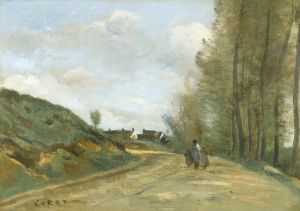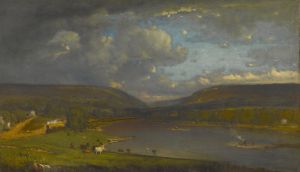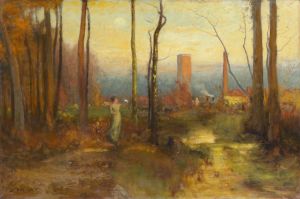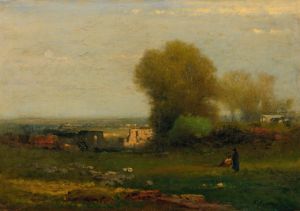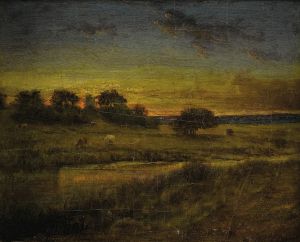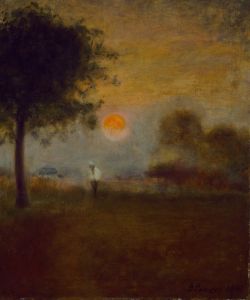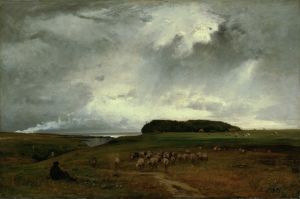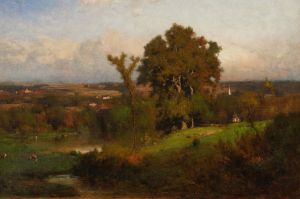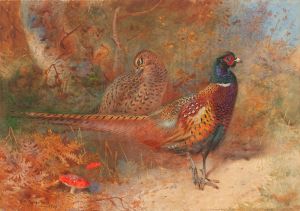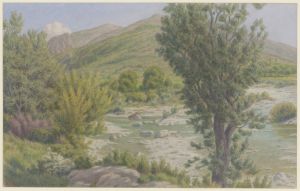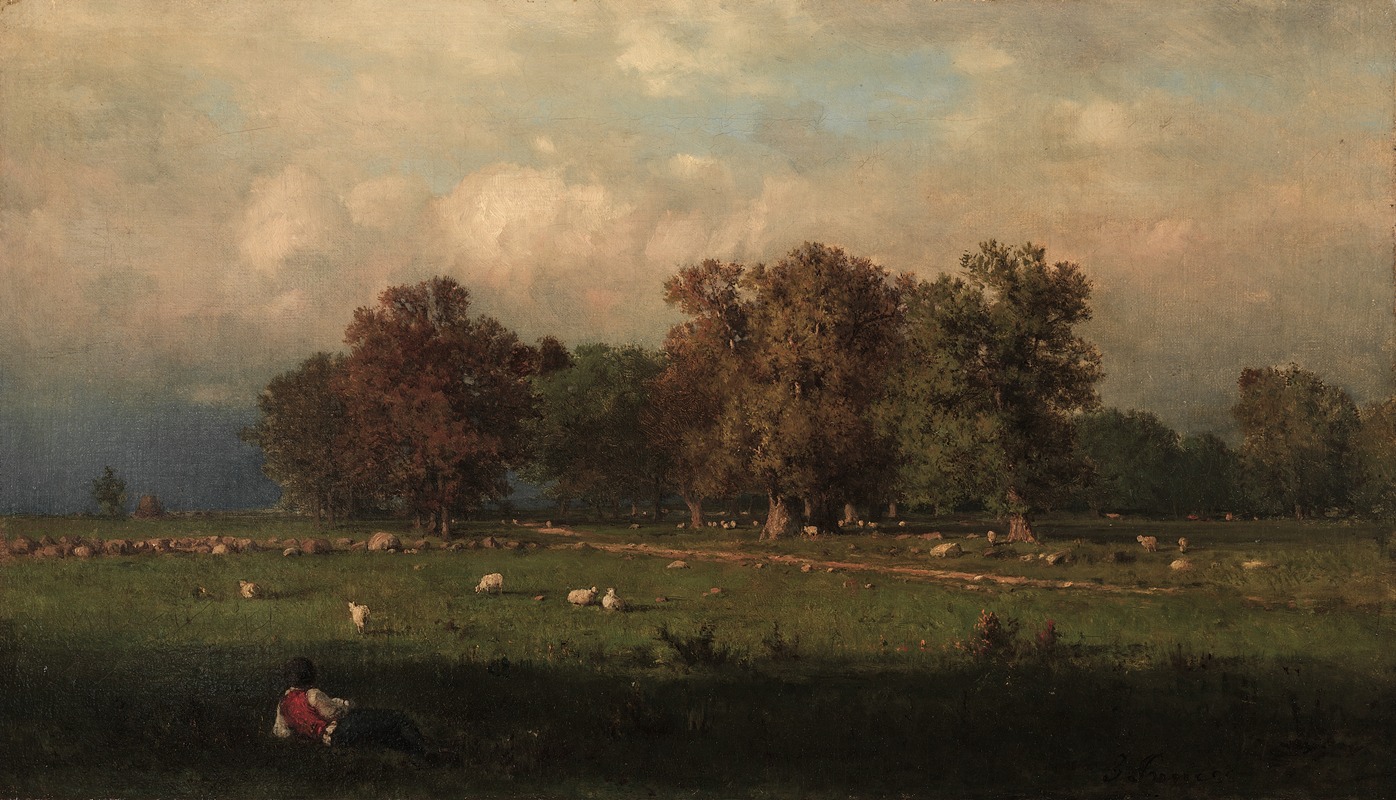
Durham, Connecticut
A hand-painted replica of George Inness’s masterpiece Durham, Connecticut, meticulously crafted by professional artists to capture the true essence of the original. Each piece is created with museum-quality canvas and rare mineral pigments, carefully painted by experienced artists with delicate brushstrokes and rich, layered colors to perfectly recreate the texture of the original artwork. Unlike machine-printed reproductions, this hand-painted version brings the painting to life, infused with the artist’s emotions and skill in every stroke. Whether for personal collection or home decoration, it instantly elevates the artistic atmosphere of any space.
"Durham, Connecticut" is a painting by the American landscape artist George Inness (1825–1894), one of the most prominent figures in 19th-century American art. Known for his contributions to the Hudson River School and later the Tonalist movement, Inness created works that often combined naturalistic detail with a sense of atmospheric mood and spiritual depth.
This particular painting depicts a pastoral scene in Durham, a small town in Connecticut. The work reflects Inness's mature style, characterized by a softer, more diffused treatment of light and color, which he developed later in his career. By the time "Durham, Connecticut" was painted, Inness had moved away from the precise realism of his earlier works and embraced a more evocative approach, focusing on the emotional and spiritual resonance of the landscape.
The painting captures the rural charm of Durham, with its rolling hills, open fields, and scattered trees. Inness's use of warm, earthy tones and subtle gradations of light creates a tranquil and harmonious atmosphere. The composition is balanced and carefully arranged, drawing the viewer's eye into the depth of the scene. This approach reflects Inness's belief that art should evoke a sense of the divine presence in nature, a philosophy influenced by the Swedish theologian Emanuel Swedenborg.
"Durham, Connecticut" exemplifies Inness's ability to blend technical skill with a deeply personal vision. His work during this period often sought to convey the interconnectedness of humanity and the natural world, aligning with the transcendentalist ideals that were influential in American culture at the time.
The exact date of the painting's creation is not definitively documented, but it is generally attributed to the later years of Inness's career, likely in the 1870s or 1880s. During this time, Inness traveled extensively throughout the northeastern United States, capturing the landscapes of New England, New York, and New Jersey.
Today, "Durham, Connecticut" is recognized as an important example of Inness's artistic legacy. The painting is held in a private collection or museum, though specific details about its current location and provenance are not widely available. Inness's work, including this piece, continues to be celebrated for its ability to transcend mere representation and evoke a profound sense of place and emotion.





